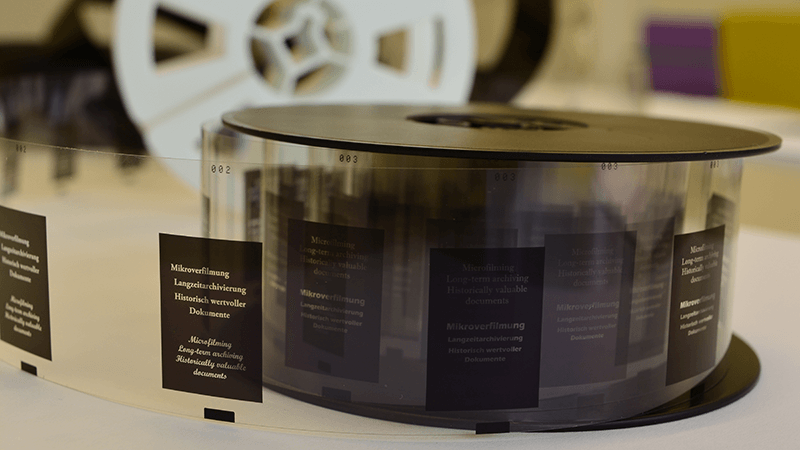
For decades, microfilm and microfiche have been indispensable tools for researchers, journalists, hospitals and archivists. There was simply no better way to minimize the storage space required to preserve old articles and data in perpetuity while simultaneously keeping them on-hand for perusal at a moment’s notice. Dependable and long-lasting, to this day microfilm and microfiche each remain invaluable resources for information gatherers of all kinds.
Unfortunately, keeping microfilm, microfiche and the machines required to read them in working order gets harder every year. The technology is outdated and the machines are so much more cumbersome to use than computers that this beloved method of research feels like it’s on its last legs. As it was with Polaroid cameras and VCRs, the convenience of modern life threatens to commit another analog artifact to the dustbin of history.
Microfilm and microfiche scanning is the perfect way to manage this change. It provides a scanning solution to frustrated users of microfilm that preserves the integrity of the original technology while doing away with the hassle of working with an outdated process. Digitizing microfiche and microfilm brings the past into the future.
Microfilm Scanning Provides Information Security and Preservation
Microfilm and microfiche may be outdated technologies, but as archiving devices they are still in use. Hospitals, libraries and universities store data and information on microfilm and microfiche, including things like historical documents, old books, decades old research papers and other proprietary information. Microfilm and microfiche maintain their non-digital utility by providing organizations a storage method they can control and keep out of the public eye.
That said, microfilm and microfiche scanning makes literally everything about researching and archiving easier. With digital images, users no longer have to worry about whether or not the microfilm reader-printers work, nor what condition the film or slides are in. They also won’t have to worry about properly threading the film into the bulky old console, nor relying on outdated hardware when it’s time to print. Scanned microfilm can be loaded into a secure cloud-based document management system, where searches can be completed in seconds.
What’s more, scanned microfilm and microfiche can be shared electronically, eliminating the need to print out the information contained on the film. With document scanning, researching and mining microfilm and microfiche no longer requires hours of scrolling through rolls of film and slide after slide. Both methods do have their uses in the modern age, but the convenience provided by scanning improves the situation immensely.
Digitize Microfilm and Microfiche for Greater Data Access
There’s something almost romantic about microfilm and microfiche, but the actual use of these ancient technologies no longer makes much sense. Film fades if not stored properly, machines break and slow analog procedures have been replaced across the board by faster digital systems. Microfilm and microfiche scanning preserves information and archives in the digital space, improving the experience of users while simultaneously making more information available more easily to more people. It’s just a better way to handle data archiving in the 21st century.
MetaSource has scanned microfilm and microfiche for insurance companies, human resource departments, government agencies, among other companies. Contact us to see how we can help you with your microfilm and microfiche project.